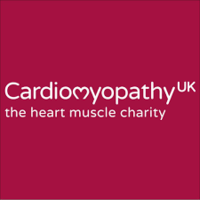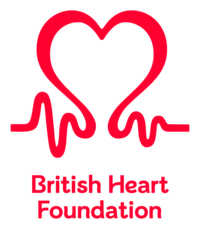For patients
Information video for patients with Professor Hugh Watkins Nov 2025
https://www.youtube-nocookie.com/embed/j_xAQUWcLXk?si=vuyohm7WLe8S9N-4
FAQs
CureHeart is a research programme funded by the British Heart Foundation. CureHeart will develop gene therapies for cardiomyopathy in people with this inherited heart condition.
Cardiomyopathy is often caused by a fault in a single gene, which can be passed to the children of an affected person. Each specific gene fault is rare, and often unique to a family.
CureHeart will use gene therapy to treat cardiomyopathy by targeting the specific gene fault, to correct the action of the gene in a person’s heart cells. Because these treatments are new, the CureHeart team will start by developing and testing techniques for gene therapy, and then running clinical trials with patient volunteers.
All forms of cardiomyopathy where the genetic cause of the condition in a person is known. This includes Hypertrophic cardiomyopathy (HCM), Dilated cardiomyopathy (DCM), Arrhythmogenic cardiomyopathy (ACM or ARVC), Restrictive cardiomyopathy (RCM).
Will CureHeart gene therapy depend on knowing the exact genetic cause of cardiomyopathy in a person?
Yes. The treatment will target the specific genetic cause of cardiomyopathy in a person or family, and will be tailored to the genetic fault.
Genetic testing (available through the NHS) looks at a large number of genes that are known to be linked with cardiomyopathy. However, in some people, genetic testing does not find a specific fault, and gene therapy would not be possible for them at present.
Together, cardiomyopathies affect about 1 person in 250. People with cardiomyopathy can be affected in very different ways. For some people cardiomyopathy is mild and causes symptoms only in later life. But in other people cardiomyopathies can cause serious problems even at a young age: people may be troubled by symptoms that interfere with day-to-day life, or suffer progressive heart failure or stroke leading to premature death. People with cardiomyopathy are at risk of their heart stopping suddenly, which can lead to sudden death.
Existing medical treatments for cardiomyopathy are not always effective, and some (such as surgical procedures or devices) can be risky. None of the existing treatments address the root cause of the condition or prevent it from getting worse. Even with existing treatments, cardiomyopathy is still a significant emotional and socioeconomic burden for many people.
Genes are instructions to make proteins, which carry out important functions in the cells which make up the different organs in the body. The chemical component of genes is DNA. When a person has a fault in a gene which makes a protein important in the heart, this can interfere with the way cells work and lead to cardiomyopathy. In cardiomyopathy, patients have one healthy copy and one with the gene fault.
Gene therapy will depend on the type of genetic fault a person has, and the way it acts to change the protein function. Gene faults act in one of two main ways:
- The fault results in loss of a protein. In this case, the treatment will either aim to replace the gene (gene replacement) or to make the healthy copy make more protein. This may involve packaging the correct genetic material into a vehicle or ‘vector’, and delivering it to target cells in the heart. There are different types of vectors.
- The fault changes the gene’s instruction to make a protein, so the protein doesn’t work as it should. In this case, gene therapy will aim to correct the faulty copy of the gene (gene editing or silencing). These approaches could either switch off a faulty gene, insert new genetic material to repair the fault, or edit the specific DNA fault. There are different gene editing techniques under development by CureHeart scientists and others. For example, CRISPR technology locates the target DNA and cuts it at the precise location required. A newer technology, Base Editing, discovered by a member of the CureHeart team, allows a specific spelling mistake to be corrected.
It will also be important to decide on a treatment goal, and to understand the proportion of cells which would need to be corrected to improve symptoms or progression.
We aim to develop treatments that are both effective and safe, but it is possible that there will be short and longer term adverse effects. For this reason, the CureHeart team will first test the treatments fully in non-human models, following established ethical principles. After this phase, the CureHeart team will set up clinical trials and we will work with regulatory bodies to look for and measure safety and effectiveness in patients over a number of years. Information collected will be used to change the processes where necessary.
We expect this to be in the next 2-5 years depending on the precise technology that proves most effective for a given type of cardiomyopathy and gene change, and we will begin with patient groups who can benefit most from gene therapy. Taking part in a trial is an important decision, which will be discussed fully with all patients who consider participation.
All new medical treatments and their component parts need to be carefully regulated, to ensure that they perform to high standards. Different countries have different regulatory bodies which assess and approve treatments and decide which patients might benefit.
Patients and family members are involved at every stage of the CureHeart study, and the team have partnered with Cardiomyopathy UK and the SHaRe Cardiomyopathy Registry in the US. We surveyed members of cardiomyopathy patient support groups to understand their views and experiences. Of 634 people who responded to the survey, 93.6% answered yes to the question ‘do you think that gene therapy should be developed for use in cardiomyopathy?’
Yes. This is because the cells targeted (heart cells) are not the cells responsible for making eggs and sperm. The cells treated by gene therapy will not be passed on to children.
Before taking part in any clinical trial, you should discuss it extensively with your cardiomyopathy specialist, and there are a number of criteria that you will need to meet to be accepted on to a trial. You should also choose to enter a trial that you and your specialist believe may benefit you, whether that be based on CureHeart treatments or any other.
Some clinical trials make use of an adeno-associated virus (AAV) to deliver the therapy. These are the shells of viruses that scientists can use to transport cargo into cells and allow medication to be transported to the area of the body where it is needed most. Taking part in a trial using AAVs to treat any condition may mean you cannot take part in CureHeart trials that also use them. This is because your body may develop an immune defence against AAVs, which may make any further treatments using AAVs ineffective.
The CureHeart team expect to begin initial clinical trials of their most promising technologies within the lifetime of the BHF-funded research programme, whose final progress review is scheduled for early 2028. The time frame will also depend on which type of cardiomyopathy, and which problem in which gene, is targeted first. The team will begin with patient groups who can benefit most from gene therapy. Taking part in any clinical trial is an important decision, and will be discussed fully with everyone who considers participating.
A clinical trial typically takes several years to complete. If a trial is successful, the next step is getting regulatory approval. This is because all new medical treatments need to be carefully regulated to ensure that they perform to high standards.
Different countries have different regulatory bodies which assess and approve treatments and decide which patients might benefit. In the UK this is done by the Medicines and Healthcare products Regulatory Agency (MHRA), in the US this is done by the Food and Drug Administration (FDA) and in the EU this is done by the European Medicines Agency (EMA). Timelines for regulatory approval will differ in different countries.
Once a new therapy has obtained regulatory approval within the UK, the National Institute for Health and Care Excellence (NICE) then evaluates it for NHS use, considering clinical effectiveness and value for money. We would hope that any therapy developed by CureHeart would be made available in the NHS. As explained above, treatment availability in other countries will depend on their own regulatory bodies.
CureHeart is developing several therapeutic approaches to maximise the chances of changing the lives of people living with inherited cardiomyopathies. Depending on the precise technology used for each of them, some therapies would be a one-time treatment whereas others might require repeat treatment to effectively protect the heart.
Gene editing therapies have recently been introduced to treat a small number of other conditions, with several others currently in clinical trials. So far, however, researchers have not been able to provide this for heart muscle conditions. It is difficult to get gene editing technologies into heart muscle cells, and to change enough of these cells to restore normal heart function. This is part of the challenge that CureHeart aims to overcome.







